| Oracle® Fusion Middleware Developer's Guide for Oracle WebCenter 11g Release 1 (11.1.1) Part Number E10148-09 |
|
|
View PDF |
| Oracle® Fusion Middleware Developer's Guide for Oracle WebCenter 11g Release 1 (11.1.1) Part Number E10148-09 |
|
|
View PDF |
Oracle WebCenter provides several ways to integrate content into a WebCenter Portal application. For more information, see Chapter 25, "Introduction to Integrating and Publishing Content."
This chapter discusses how to configure connections to content repositories to provide access to the content, and how to add content to pages in a WebCenter Portal application.
This chapter includes the following sections:
In your WebCenter Portal application, the following adapters are integrated by default:
Oracle Content Server: The Oracle Content Server adapter is used to integrate content from an automated information system managed by Oracle Content Server. This system enables sharing, managing, and distributing of business information through a Web site as a common access point.
Oracle Portal: The Oracle Portal adapter is used to integrate content from a content repository located in the Oracle Portal schema.
File System: The File System adapter is used to add content located on your operating system's file system to JSF pages.
Note:
The File System adapter is intended to be used in the development environment only.The Oracle Content Server, Oracle Portal, and file system adapters are bundled with Oracle WebCenter Extension bundle.
Content repository connections are required to access the repository content to be published on JSF pages. These connections are also required to access the repository content through the WebCenter Content REST APIs.
This section describes how to configure content repository connections based on Oracle Content Server, Oracle Portal, and file system adapters. Content Presenter can connect to and retrieve content available in Oracle Content Server content repositories. With JCR data controls, you can connect to Oracle Content Server, Oracle Portal, and file systems.
Connections can be created under Application Resources in the Application Navigator and under IDE Connections in the Resource Palette.
This section includes the following subsections:
Section 26.2.2, "How to Create a Content Repository Connection Based on the Oracle Portal Adapter"
Section 26.2.3, "How to Create a Content Repository Connection Based on the File System Adapter"
Section 26.2.4, "What Happens When You Create a Repository Connection"
Section 26.2.5, "What You May Need to Know When Creating a Repository Connection"
This section describes how to configure an Oracle Content Server-based content repository connection. To successfully perform the subsequent steps, you must use Oracle Content Server release 11.1.1.4.0 or 10.1.3.5.1. The release 10.1.3.5 or 11.1.1.3.0 are required for Content Presenter. For information about how to configure Oracle Content Server for Oracle WebCenter, see "Oracle Content Server Prerequisites" in Oracle Fusion Middleware Administrator's Guide for Oracle WebCenter.
To create an Oracle Content Server-based repository connection:
In Oracle JDeveloper, open your WebCenter Portal application.
In the Application Resources panel, right-click Connections and choose New Connection, then Content Repository.
In the Create Content Repository Connection dialog, specify a connection name for the connection; for example, MyOCSConnection.
Tip:
You can choose between creating application-specific connections in the Application Resources panel and creating common connections in the Resource Palette (IDE Connections).Select Oracle Content Server from the Repository Type box.
Select Set as primary connection for Documents service, to make this connection the primary (default) connection for all content management operations through the Documents service or Content Presenter. Selecting this option writes a configuration to the adf-config.xml file that identifies this connection as the default connection. If connectionName parameter is specified for a Documents service task flow, that value overrides this setting.
Note:
To be able to set a connection as primary (default) connection for the Documents service, you must select the Application Resources option in Create Connection In. This is because connections created as IDE connections cannot be used directly, they must be added to applications.Under Configuration Parameters, enter values for the parameters, as shown in Table 26-1 and Figure 26-1.
Table 26-1 Configuration Parameters for Oracle Content Server
| Configuration Parameters | Values |
|---|---|
|
RIDC Socket Type |
Determines whether the client library connects on the Content Server listener port or the Web server filter. It accepts
Table 26-2 includes more information on the configuration parameters required for each RIDC socket type. |
|
Server Host Name |
Host name of the system where the Oracle Content Server is running. For example: |
|
Content Server Listener Port |
Port of the server specified in the Server Host Name field. This corresponds to the |
|
URL of the Web Server Plugin |
If the RIDC socket type is For Oracle Content Server release 11.1.1.4.0: For Oracle Content Server release 10.1.3.5: |
|
Web Server Context Root |
The Web server context root for Oracle Content Server to integrate advanced metadata and Site Studio capabilities in the WebCenter application. The format of the Web server context root is |
|
Admin Username |
The user name with administrative rights for the Oracle Content Server instance. It defaults to |
|
Admin Password |
The password for the Oracle Content Server admin user. For example: |
|
KeyStore File Location |
Location of key store that contains the private key used to sign the security assertions. The key store location must be an absolute path. For example: |
|
KeyStore Password |
The password required to access the keystore. |
|
Private Key Alias |
The client private key alias in the keystore. The key is used to sign messages to the server. The public key corresponding to this private key must be imported in the server keystore. |
|
Private Key Password |
The client private key password required to retrieve the key from the keystore. |
|
Cache Invalidation Interval |
The interval (in minutes) used by WebCenter caches to automatically detect external Oracle Content Server content changes. This allows WebCenter to automatically clear cached items when changes to those items are made directly in the Oracle Content Server UI.The interval is in minutes. A value of |
|
Binary Cache Maximum Entry Size |
The maximum size (in bytes) for WebCenter caching of Oracle Content Server binary documents. Documents larger than this size are not cached by WebCenter.The unit is bytes and defaults to |
Table 26-2 Oracle Content Server Connection Parameters for Each RIDC Socket Type
| Connection Parameters | RIDC Socket Type: web | RIDC Socket Type: socket | RIDC Socket Type: socketssl |
|---|---|---|---|
|
Server Host Name |
Not applicable |
Mandatory for Content Presenter Defaults to local host. |
Mandatory for Content Presenter Defaults to local host. |
|
Content Server Listener Port |
Not applicable |
Port specified for the incoming provider in the server. Defaults to 4444. |
Port specified for the Defaults to |
|
URL of the Web Server Plugin |
Mandatory |
Not applicable |
Not applicable |
|
Web Server Context Root |
Optional |
Optional |
Optional |
|
Admin Username |
Mandatory |
Optional Defaults to |
Optional Defaults to |
|
Admin Password |
Mandatory |
Not applicable |
Not applicable |
|
Key Store and Private Key |
Not applicable |
Not applicable |
Mandatory |
|
Identity Propagation |
Not supported at runtime |
Supported For testing purpose, connects as guest if no/invalid user name is specified. |
Supported For testing purpose, connects as guest if no/invalid user name is specified. |
|
External Application |
Mandatory |
Supported Password is not used. |
Supported Password is not used. |
|
User Name and Password |
Supported |
Supported The password is not verified during the test connection operation. |
Supported The password is not verified during the test connection operation. |
Figure 26-1 Content Repository Connection - Oracle Content Server
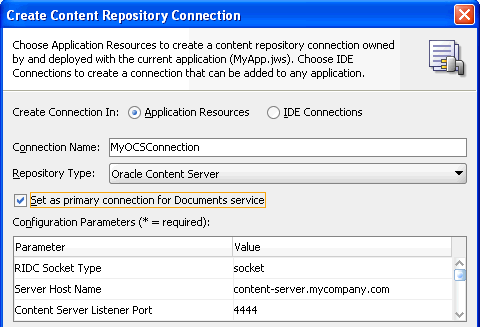
In the Login Timeout (ms) field, specify the time in milliseconds. This timeout determines how long the application must wait when trying to establish a session with the content repository. If the network connection or the content repository server to which you are trying to connect is slow, then consider overriding the default value specified in this field.
Select the applicable authentication method. See Section 26.2.5.1, "What You Should Know About Using Identity Propagation and External Application Authentication Methods" for information. If you select the Identity Propagation authentication method, then you must configure secure socket layer (SSL) in Oracle Content Server. For information, see the section "Oracle Content Server - Security Considerations" in Oracle Fusion Middleware Administrator's Guide for Oracle WebCenter.
User Name and Password fields under the Specify login credentials for the current JDeveloper session checkbox are optional for the Identity Propagation authentication method. In a secured application when Identity Propagation is the chosen authentication method, selecting the Specify login credentials for the current JDeveloper session checkbox lets you navigate to the authenticated content repository connection at design time. When this checkbox is selected, you can also validate if user name and password you specified can be authenticated.
Note:
If the Specify login credentials for the current JDeveloper session checkbox is selected, then the credentials you entered are used. If the checkbox is not selected, then the connection is tested using External Application credentials (if they exist), otherwise null credentials are used.If you have selected External Application for authentication and also specified either public or shared credentials, then you can leave these fields blank, as the public or shared credentials can be used to login at design time. However, if you have selected External Application but have not specified public or shared credentials, then you must specify user name and password here.
Click Test.
During testing user name and password are used (if specified). If they are not specified, but an external application is defined with either shared or public credentials, then this is used. Otherwise the guest user is used.
Click OK.
In the Application Resources panel, expand the repository connection you just created. The Connection Credentials dialog displays.
Note:
The Connection Credentials dialog displays if you do not save the credentials, that is, you do not select the Specify login credentials for the current JDeveloper session checkbox, or if you do not specify an External Application service that uses public or shared credentials.Enter the User Name and Password for the Oracle Content Server connection and click OK. The connection displays under the Application Resources panel.
This section describes how to create a content repository connection based on the Oracle Portal adapter. Before creating a repository connection, see Section 26.2.5, "What You May Need to Know When Creating a Repository Connection". You can use this connection to configure a content data control that will enable you to add content from the Oracle Portal repository to JSF pages.
To create an Oracle Portal repository connection:
In Oracle JDeveloper, open your WebCenter Portal application.
In the Application Resources panel, right-click Connections and choose New Connection and then Content Repository.
In the Create Content Repository Connection dialog, specify a name for the connection; for example, MyOraclePortal.
Tip:
You can choose between creating application-specific connections in the Application Resources panel and creating common connections in the Resource Palette (IDE Connections).Select Oracle Portal from the Repository Type box, as shown in Figure 26-2.
Figure 26-2 Content Repository Connection - Oracle Portal
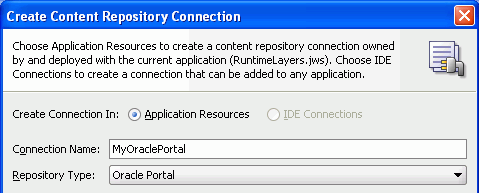
Select Set as primary connection for Documents service to make this connection the primary (default) connection for all content management operations through the Documents service or Content Presenter. Selecting this option writes a configuration to the adf-config.xml file that identifies this connection as the default connection. If connectionName parameter is specified for a Documents service task flow, that value overrides this setting.
Note:
To be able to set a connection as primary (default) connection for the Documents service, you must select the Application Resources option in Create Connection In. This is because connections created as IDE connections cannot be used directly, they must be added to applications.Select a connection from the Database Connection list, or create a new connection to the Oracle Portal schema:
In the Create Database Connection wizard, specify the connection name and type.
Enter the database user name and password of the Oracle Portal schema. By default, the user is PORTAL.
Under Oracle (JDBC) Settings, if you intend to specify a custom JDBC URL, then select the Enter Custom JDBC URL checkbox, and specify the database URL of the portal schema in the jdbc format:
jdbc:oracle:thin:@dbhost:dbport:dbsid
If you did not perform the above step, then select a driver, enter the host name, JDBC port, SID, and service name, as shown Table 26-3 and Figure 26-3.
Table 26-3 Parameters for Creating Oracle Portal-based Content Data Control
| Parameters | Description |
|---|---|
|
Driver |
There are two types of drivers: thin and oci8. The thin driver can be used to connect to Oracle Database release 8i or later databases with TCP/IP network protocols. This driver is included in the default Oracle JDBC library for all projects. The oci8 driver is used when creating a Java application that runs against an Oracle Application Server. This is a thick driver optimized for the Oracle Database. It is a mix of Java and native code. This driver handles any database protocol (TCP, IPX, BEQ, and so on). It is recommended for applications that are run from the computer on which they are stored. |
|
Host Name |
Name of the Oracle Database. Use an IP address or a host name that can be resolved by TCP/IP; for example, |
|
JDBC Port |
Value to identify the TCP/IP port. |
|
SID |
Unique system identifier of an Oracle database instance. |
|
Service Name |
The service name for an Oracle database instance. |
Click OK.
In the Create Content Repository Connection dialog, in the Login Timeout (ms) field, specify the time in milliseconds. This timeout determines how long the application must wait when trying to establish a session with the content repository. If the network connection or the content repository server to which you are trying to connect is slow, then consider overriding the default value specified in this field.
Select the applicable authentication method. See Section 26.2.5.1, "What You Should Know About Using Identity Propagation and External Application Authentication Methods" for information.
Select the Specify login credentials for current JDeveloper session checkbox and enter the Oracle Portal single sign-on user name and password for logging in to your portal instance. The Oracle Portal single sign-on user name and password entered here are used to test the connection and are functional only at design time. Then click OK.
Note:
If the Specify login credentials for current JDeveloper session checkbox is selected, then the credentials you entered are used. If the checkbox is not selected, then the connection is tested using External Application credentials (if they exist), otherwise null credentials are used.If you have selected External Application for authentication and also specified either public or shared credentials, then you can leave these fields blank, as the public or shared credentials can be used to login at design time. If you specified both public and shared credentials for the external application, then the public credentials have higher precedence. However, if you have selected External Application but have not specified public or shared credentials, then you must specify user name and password here.
In the Application Resources panel, expand the repository connection you just created. The Connection Credentials dialog displays.
Note:
The Connection Credentials dialog displays if you do not save the credentials, that is, you do not select the Specify login credentials for the current JDeveloper session checkbox, or if you do not specify an External Application service that uses public or shared credentials.Enter the user name and password for Oracle Portal connection and click OK. The connection displays under the Application Resources panel.
See Also:
To create a data control using this connection, perform the procedure described in Section 27.2, "Configuring Content Data Controls for JCR Adapters".This section describes the procedure to create a content repository connection based on the file system adapter. The File System adapter is intended to be used in the development environment only.
To create a File System repository connection:
In Oracle JDeveloper, open your WebCenter Portal application.
In the Application Resources panel, right-click Connections and choose New Connection and then Content Repository.
In the Create Content Repository Connection dialog, enter a name for the connection; for example, MyConnection.
Tip:
You can choose between creating application-specific connections in the Application Resources panel and creating common connections in the Resource Palette (IDE Connections).Select File System from the Repository Type box.
Select Set as primary connection for Documents service to make this connection the primary (default) connection for all content management operations through the Documents service or Content Presenter. Selecting this option writes a configuration to the adf-config.xml file that identifies this connection as the default connection. If connectionName parameter is specified for a Documents service task flow, that value overrides this setting.
Note:
To be able to set a connection as primary (default) connection for the Documents service, you must select the Application Resources option in Create Connection In. This is because connections created as IDE connections cannot be used directly, they must be added to applications.Under Configuration Parameters, select the Base Path row, and enter the path to the folder in which your content is placed, for example, C:\MyContent.
Note:
The following must be considered while creating a file system connection:The base path value is used as the root ("/") for the file system-based data control in Section 27.5, "Integrating Content Using Content Data Controls".
When you work on a UNIX system, the File System adapter inherits the case-sensitive file name characteristic of UNIX systems. So, on UNIX systems, you must ensure that references to files follow the same case as that used in the original file names. For example, suppose the Test.html file was created on a Microsoft Windows system. When you reference this file on a Linux system, you must ensure that you use Test.html, and not test.html or TEST.html.
Leave the Login Timeout (ms) field blank.
Click Test Connection to check whether you have entered the connection details correctly. You should see a Success! status, as shown in Figure 26-4.
Click OK.
In the Application Resources panel, expand the repository connection you just created.
When you create a connection to a repository, the contents in the main directory of the repository display under the Content Repository connection in the Application Resources panel, as shown in Figure 26-5. You can double-click folders and files to view them.
You can use repository connections to create JCR data controls that enable integration of the repository content with JSF pages. See Section 27.2, "Configuring Content Data Controls for JCR Adapters" and Section 27.5, "Integrating Content Using Content Data Controls" for information. These connections can also be consumed through the Documents service and Content Presenter task flows. See Chapter 29, "Integrating the Documents Service" for information.
This section includes:
The Create Content Repository Connection dialog provides the following options for authentication methods:
Identity Propagation: If you select this option, no credentials are passed to the repository. The repository connector instead uses the current user's identity as determined from the Java security context. This must only be used when the application and the repository use the same identity store to authenticate users.
To apply this authentication method, it is best to configure security for your application using the Configure ADF Security wizard since repositories may support only authenticated users or provide only limited access to the public or guest user. See Section 27.4, "Securing a Content Repository Data Control".
External Application: The External Application method can be used in all other cases where the current user identity should not be propagated directly to the repository. For more information, see Section 63.13, "Working with External Applications" and Section 29.3, "Setting Security for the Documents Service."
The External Application service allows different types of credentials to be associated with a connection:
Public credentials are used whenever an application is not secured, or the user has not yet logged in.
Shared credentials are used for any authenticated user.
If shared credentials are not specified, then mapped credentials can be used to obtain a result similar to identity propagation when the application and content repository do not use the same user store. In that case the external application service provides runtime screens through which users can provide their credentials for accessing the content repository. Those credentials are securely stored and used for any future connection that this user tries to establish.
If you intend to configure the External Application service, then click New to launch the Register External Application wizard and do the following:
Specify name of the external application.
In the Login URL field, enter the URL of the external application; for example, http://content-server.mycompany.com/idc/
Note:
This URL is optional and is required only to provide click through login to the content repository's own user interface. See the External Application service documentation for more information on how to configure click through login.Then, under Authentication Details, select Basic from the list. Leave the fields under Login Details blank.
This option is selected when click through login is not required. If click through login is enabled, then you must select another option based on the authentication method used in the repository.
Accept the default values and click Next.
Enter shared credentials that can be used at design time and runtime. Do not specify shared credentials, if users must specify their own credentials.
Enter public credentials that can be used at design time and runtime. Specify public credentials only if you intend public users to view documents or contents.
Click Finish.
The following should be considered while using the Oracle Portal adapter:
To use Oracle Portal-based content data control capabilities, you can install Oracle Portal release 10.1.4.1, 10.1.4.2, or 11. If you use the Oracle Portal release 10.1.4.1, then you must update it with the required patches. Consult Oracle Application Server Release Notes for Microsoft Windows (for the required platform) for release 11.1.1.0.0 to know the exact patch number.
Only file, image, imagemap, and text item types and custom types based on these item types are supported.
The portal:container page type and its extensions are supported.
Content is always exposed in the default language of the page group. For example, if there are three page groups with different default languages, then the content displays only for those default languages and not for any translations that exist.
This section describes how you can edit a common or an application-specific content repository connection. This section includes the following subsections:
Section 26.3.1, "How to Edit a Common Repository Connection"
Section 26.3.2, "How to Edit a WebCenter Portal Application-Specific Content Repository Connection"
Common repository connections (IDE connections) are created and edited under the Resource Palette.
To edit a common repository connection:
Under the Resource Palette, right-click the repository connection you intend to edit and choose Properties, as shown in Figure 26-6. The Edit Repository Connection dialog displays, as shown in Figure 26-7.
Figure 26-6 Resource Palette - Properties
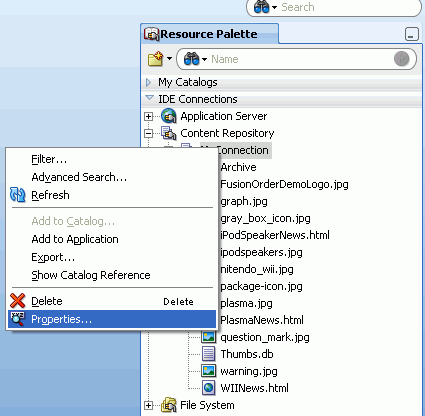
Figure 26-7 Edit Content Repository Connection
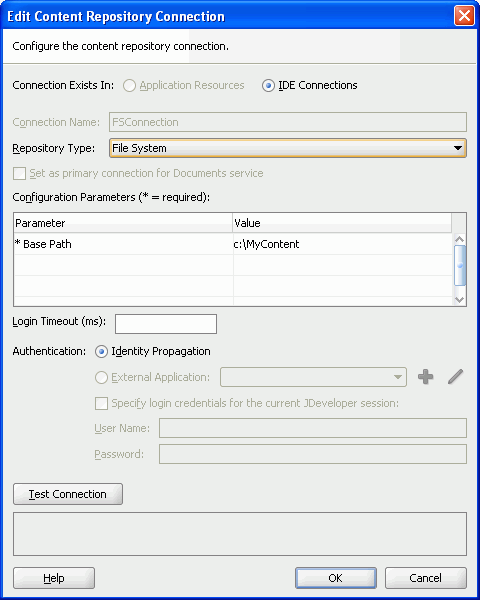
Change the appropriate parameters.
Test the connection and click OK.
Application-specific content repository connections exist under the Application Resources panel.
To edit a WebCenter application-specific content repository connection:
In the Application Resources panel, right-click the connection you intend to edit, and choose Properties, as shown in Figure 26-8. The Edit Content Repository Connection dialog displays, as shown in Figure 26-9.
Figure 26-8 Application Resources - Properties
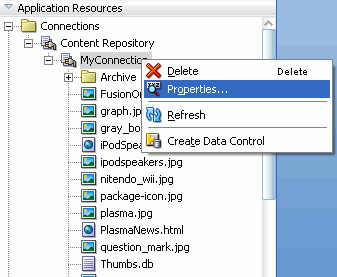
Figure 26-9 Edit Content Repository Connection

Change the appropriate parameters. Depending on the repository type, see the earlier sections that describe how to create repository connections. For example, for Oracle Content Server, see Section 26.2.1, "How to Create a Content Repository Connection Based on the Oracle Content Server Adapter".
Test the connection and click OK.
You can use an existing repository connection for any WebCenter Portal application, if you created it as a common repository under the Resource Palette.
To use an existing repository connection:
In Oracle JDeveloper, open the WebCenter Portal application for which you intend to use an existing repository connection.
Go to the Resource Palette and select the repository connection that you intend to use for a new application, for example MyConnection_2, and drop it under the Application Resources panel of the new application, as shown in Figure 26-10.
Tip:
Alternatively, right-click the connection and choose Add to Application. The connection is displayed under the Application Resources panel.Figure 26-10 Dragging an Existing Common Repository Connection (IDE Connection) to an Application

You can now configure a data control for your new application from this repository connection, as described in Section 27.2, "Configuring Content Data Controls for JCR Adapters".